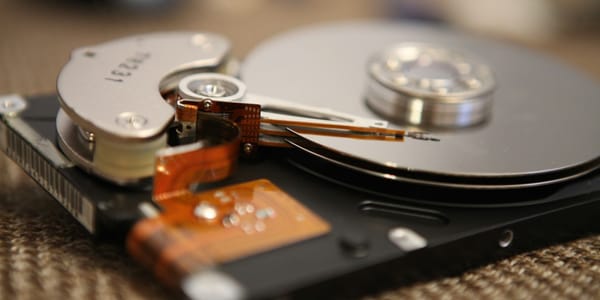Intel N100 vs N305 Mini PCs: Which Should You Buy for Your Homelab in 2025?

If you're building a homelab in 2025, you've probably noticed Intel's N-series processors taking over the mini PC market. The N100 and N305 have become the go-to choices for budget-conscious homelab enthusiasts, but which one should you actually buy?
I've spent months researching these processors and analyzing real-world performance data from the homelab community. Here's everything you need to know to make the right choice.
The Quick Answer
Get the N100 if: You want the best value, run lightweight services (Docker containers, Home Assistant, PiHole), or care about power efficiency and silence.
Get the N305 if: You need more CPU power for multiple VMs, plan to run Proxmox with several guests, or want better multi-tasking performance.
Specifications Comparison
| Feature | Intel N100 | Intel N305 |
|---|---|---|
| Cores/Threads | 4C/4T | 8C/8T |
| Base/Boost Clock | 1.8 GHz / 3.4 GHz | 1.8 GHz / 3.8 GHz |
| TDP | 6W | 15W |
| Cache | 6MB L3 | 6MB L3 |
| GPU | Intel UHD (24 EU) | Intel UHD (32 EU) |
| Max RAM | 16GB (DDR4/DDR5) | 16GB (DDR4/DDR5) |
| Process Node | Intel 7 (10nm) | Intel 7 (10nm) |
| Typical Price | $150-200 | $250-350 |
Real-World Performance
Power Consumption
The N100's biggest advantage is power efficiency. In real-world testing:
- N100 idle: 6-8W
- N100 under load: 10-15W
- N305 idle: 10-12W
- N305 under load: 20-30W
What this means for you: If you run your homelab 24/7, the N100 will cost about $50-70 less per year in electricity compared to the N305 (at $0.13/kWh). Over three years, that's $150-210 in savings.
CPU Performance
The N305's 8 cores make a real difference in multi-threaded workloads:
- Geekbench 6 Single-Core: N100 (~1216) vs N305 (~1180) - essentially tied
- Geekbench 6 Multi-Core: N100 (~2950) vs N305 (~4800) - N305 is 62% faster
- Cinebench R23 Multi-Core: N100 (~2949) vs N305 (~4700) - N305 is 59% faster
Bottom line: Single-threaded performance is nearly identical. The N305 shines when running multiple applications simultaneously.
Container Performance
For Docker-heavy setups, both processors perform admirably:
- N100: Can easily handle 15-20 lightweight containers (PiHole, Uptime Kuma, Portainer, Nextcloud, etc.)
- N305: Can handle 30-40 containers without breaking a sweat
Most homelab users run fewer than 15 containers, making the N100 perfectly adequate.
Virtual Machine Performance
This is where the N305 pulls ahead significantly:
- N100: Can run 2-3 lightweight Linux VMs or 1-2 Windows VMs comfortably
- N305: Can run 5-6 lightweight Linux VMs or 3-4 Windows VMs
If you're planning a Proxmox cluster or need multiple VMs running simultaneously, the N305's extra cores become essential.
Use Case Recommendations
Best for N100:
- Docker-focused homelabs - Running containerized services
- Network services - PiHole, AdGuard, WireGuard VPN
- Media servers - Jellyfin, Plex (with hardware transcoding)
- Home Assistant - Perfect for smart home hubs
- Always-on services - Low power draw matters
- Silent operation - Many N100 systems are fanless
- Budget builds - Best performance per dollar
Best for N305:
- Proxmox virtualization - Multiple VMs running simultaneously
- Development environments - Testing across multiple OSes
- Kubernetes clusters - K3s or similar setups
- Heavy multi-tasking - Many services running at once
- TrueNAS Scale - More headroom for apps and VMs
- 4K transcoding - Better GPU for multiple streams
Network Performance
Both processors support 2.5GbE networking (depending on the mini PC model):
- VPN throughput: N100 can saturate gigabit Ethernet via Tailscale/WireGuard using ~40% CPU
- N305 offers similar network performance but with more headroom for other tasks
For homelab networking, both are excellent. The N100 won't be a bottleneck unless you're doing extreme routing tasks.
Common Mini PC Models
N100 Options:
- Beelink S12 Pro ($150-180) - DDR4, 1GbE
- Beelink EQ12 ($180-220) - DDR5, 2x 2.5GbE
- GMKtec NucBox G3 ($159-199) - DDR5, 2.5GbE
- CWWK N100 ($180-250) - 4x 2.5GbE, great for pfSense/OPNsense
N305 Options:
- Beelink SER5 Max ($280-320) - Good all-rounder
- Minisforum UM350 ($299-350) - Solid build quality
- GEEKOM Mini IT8 ($320-380) - Premium option
Storage Considerations
Most mini PCs come with:
- 1x M.2 NVMe slot (2280 size, PCIe 3.0)
- 1x 2.5" SATA bay (optional in some models)
For homelabs:
- 512GB NVMe is the sweet spot for most builds
- Add a 2.5" SSD for extra storage if needed
- Both processors handle NVMe speeds equally well
RAM Recommendations
- N100: 16GB is plenty for most homelabs (8GB minimum)
- N305: 16GB minimum, consider 32GB for heavy VM use
DDR4 vs DDR5:
- DDR4 is cheaper and widely available (max 32GB)
- DDR5 costs more but supports 48GB SO-DIMMs
- Performance difference is negligible for homelab use
Operating System Support
Both processors work great with:
- Proxmox VE - Full support, hardware transcoding works
- TrueNAS Scale - Excellent ZFS performance
- Ubuntu Server - Perfect compatibility
- OpenWrt - Great for custom router builds
- pfSense/OPNsense - Full support
- Windows 11 - Official support
Noise & Thermals
N100:
- Many models are completely fanless (0dB)
- Fanless models stay under 60°C under load
- Active cooled models are whisper-quiet
N305:
- Requires active cooling (small fan)
- Usually inaudible from 1+ meter away
- Stays under 70°C with proper cooling
Value Analysis
Let's compare total cost of ownership over 3 years:
N100 Build:
- Mini PC: $180
- RAM upgrade (16GB): $30
- Power (3 years @ 10W): $34
- Total: $244
N305 Build:
- Mini PC: $300
- RAM upgrade (16GB): $30
- Power (3 years @ 25W): $86
- Total: $416
Difference: $172 - Is the extra performance worth it for your use case?
My Recommendation
For 80% of homelab users, the N100 is the smarter choice. Here's why:
- Sufficient performance for most homelab tasks
- Incredible power efficiency for 24/7 operation
- Silent or near-silent operation
- Best value for the performance you get
- Lower total cost of ownership
Choose the N305 only if:
- You're running 5+ VMs regularly
- You need heavy multi-tasking capabilities
- Power cost isn't a concern
- Budget allows for the premium
What I'd Buy Today
If I were starting fresh, I'd get:
- CWWK N100 with 4x 2.5GbE ports ($200)
- 32GB DDR4 RAM ($40)
- 512GB NVMe SSD ($35)
Total: ~$275 for a capable, efficient homelab server that'll handle anything I throw at it.
Bottom Line
The N100 represents an incredible value proposition for homelab enthusiasts. It offers desktop-class performance in a power-sipping package that won't break the bank or heat up your room.
The N305 is a worthy upgrade if you genuinely need the extra cores, but most homelab users will never max out an N100.
Start with the N100. You can always add a second N100 box later for less than the cost difference to an N305.
Have you built a homelab with an N100 or N305? Share your experience in the comments below!
Last updated: November 2025



